Decor
How Do I Personalize My Office Cubicle?

We’ve all admired those flawlessly styled office environments featured in magazines or across social networks, prompting us to ask ourselves, ‘How do I infuse my personal touch into my bit of corporate space?’
The key to personalizing your office cubicle lies in finding the perfect balance between functionality and self-expression.
By incorporating a few simple yet effective strategies, you can turn your cubicle into a space that not only reflects your personality but also boosts your productivity and overall well-being.
Key Takeaways
- Personalize your office cubicle with artwork, colorful desk organizers, and decorative accessories.
- Maximize space efficiency by strategically arranging furniture and using vertical storage solutions.
- Incorporate greenery with low-maintenance plants and modern planters.
- Create a comfortable atmosphere with ergonomic furniture, proper lighting, and personal touches.
Choosing Personal Decor
When it comes to choosing personal decor for our office cubicle, it's essential to select items that reflect our personality and create a comfortable and inspiring work environment. One way to infuse our cubicle with personality is through colorful artwork. Whether it's a vibrant abstract painting or a quirky print that resonates with our interests, artwork adds a personal touch and can brighten up the space. It's amazing how a pop of color can lift our spirits during a long workday.
In addition to artwork, unique lighting options can completely transform the ambiance of our cubicle. String lights, stylish desk lamps, or even a Himalayan salt lamp not only provide functional lighting but also contribute to the overall atmosphere. We can play around with different lighting sources to create a cozy and inviting feel that makes our cubicle a place we enjoy spending time in.
Maximizing Space Efficiency
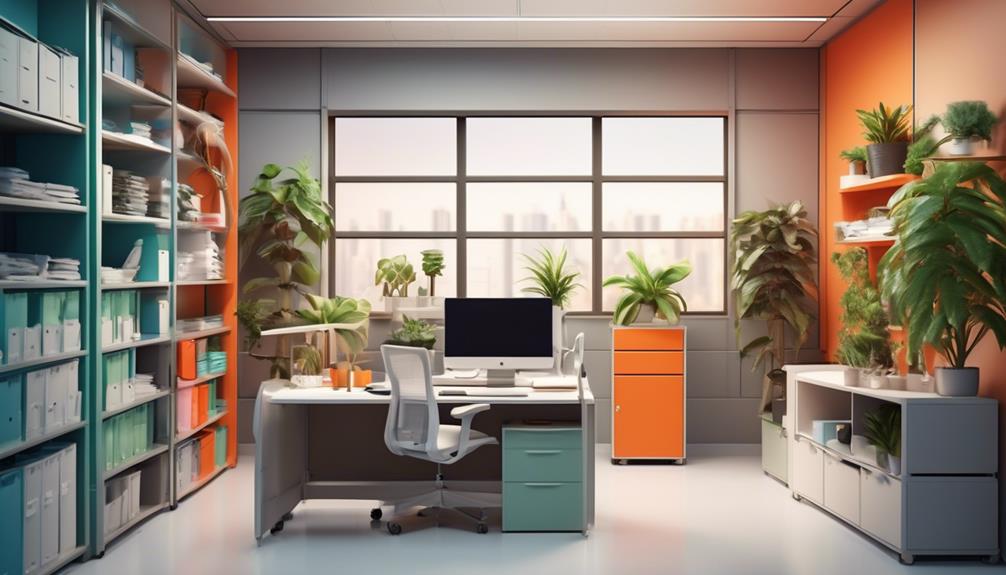
To maximize space efficiency in our office cubicle, we strategically arrange our furniture and utilize multi-functional storage solutions. By organizing our space thoughtfully, we create an environment that fosters productivity and creativity. Here's a glimpse of how we make the most of our office cubicle:
| Furniture | Function |
|---|---|
| Corner desk | Utilizes corner space efficiently |
| Shelving unit | Provides vertical storage for books and supplies |
| Rolling file cabinet | Doubles as a side table and extra storage |
These furniture pieces not only serve their primary functions but also contribute to space organization. Additionally, we make use of wall-mounted organizers, desk caddies, and cable management solutions to keep our workspace clutter-free. This attention to space efficiency not only makes our office cubicle look stylish and well put together but also leads to a productivity boost. With everything in its place and easy to find, we can focus on our work without the distraction of a disorganized space.
Incorporating Greenery
Incorporating greenery into our office cubicle not only enhances the aesthetic appeal but also brings a refreshing and lively atmosphere to our workspace. When selecting plants for our cubicle, we should consider low-maintenance options like succulents, snake plants, or peace lilies. These plants not only add a touch of nature but also thrive in indoor environments with minimal care. Additionally, considering the limited space in our cubicle, hanging planters or wall-mounted planters can be practical choices to free up desk space and add a unique visual element.
Maintenance tips for our office plants include choosing the right spot with sufficient natural light and remembering to water them regularly. It's also important to consider the office environment, as air conditioning or heating can impact plant health. To maintain a tidy and stylish look, we can opt for modern planters that complement our cubicle decor.
Incorporating greenery into our office cubicle not only contributes to a more inviting and pleasant work environment but also adds a personal touch to our space.
Adding Personal Touches

Our office cubicle has come to life with the addition of greenery, and now it's time to infuse our personal touches to make it truly our own. Adding personal touches can transform a dull workspace into a cozy and inspiring haven.
Here are some creative and practical ideas to personalize our office cubicle:
- Choosing Artwork: Select artwork that resonates with us, whether it's a colorful abstract painting, a serene landscape, or a motivational quote. Artwork adds personality and can be a great conversation starter with colleagues.
- Selecting Photos: Displaying photos of loved ones, cherished memories, or favorite travel destinations can instantly uplift our mood and remind us of what truly matters. It's a simple way to infuse warmth and familiarity into our workspace.
- Decorative Accessories: Incorporating decorative accessories such as unique desk organizers, stylish pen holders, or quirky desk toys can add a touch of whimsy and personality to our cubicle.
- Customized Stationery: Personalized stationery, from notepads to sticky notes, can add a special touch to our workspace and make everyday tasks more enjoyable.
Creating a Comfortable Atmosphere
As we strive to transform our office cubicle into a comfortable and inviting space, we focus on incorporating elements that promote relaxation and productivity. Ergonomic furniture is essential for creating a comfortable atmosphere. Invest in a chair that supports your posture and a desk at the right height to prevent strain.
Proper lighting is also crucial for reducing eye fatigue and creating a cozy ambiance. Consider adding a desk lamp or floor lamp to supplement the overhead lighting.
Soundproofing can greatly enhance the comfort of your workspace. Noise-canceling headphones or earplugs can help minimize distractions, allowing you to focus better.
Additionally, privacy screens can create a sense of seclusion within your cubicle, making it feel like your own personal sanctuary. These screens not only provide privacy but can also be a canvas for personalization, with the addition of photos, notes, or artwork.
Frequently Asked Questions
How Can I Reduce Noise and Distractions in My Cubicle?
To reduce noise and distractions in our cubicle, we've found privacy solutions that work wonders. Hanging sound-absorbing panels, using noise-canceling headphones, and adding a white noise machine all help create a serene workspace.
Additionally, rearranging our desk to face away from high-traffic areas and utilizing a privacy screen can further minimize disturbances. These small adjustments have significantly improved our focus and productivity in the office.
What Are Some Creative Ways to Display Photos and Personal Mementos in My Cubicle?
When it comes to creative decor, we love to use shelves or corkboards to display our photos and personal mementos.
It's a great way to infuse personality into our workspace and make it feel more like home.
Personalized organization is key – we use stylish containers and desk organizers to keep everything in its place while adding a touch of flair.
It's all about finding that balance between practicality and personal style.
Are There Any Tips for Incorporating Technology and Gadgets Into My Cubicle Design?
When it comes to tech organization and gadget storage, we've found some great ways to integrate technology into our personalized workspace.
Adding a charging station or cable management system can keep things tidy and efficient.
Plus, incorporating smart gadgets like Bluetooth speakers or digital photo frames can bring a modern touch to our cubicle design.
It's all about finding that perfect balance between practicality and style while embracing the latest tech trends.
How Can I Personalize My Office Supplies and Desk Accessories?
When it comes to personalizing our office supplies and desk accessories, we love getting creative with DIY decorations and customized stationery.
It's amazing how a few personalized touches can really make our workspace feel more like our own. Whether it's adding a pop of color with custom stationery or creating a cozy atmosphere with handmade decorations, the possibilities are endless!
We're all about infusing our space with our unique style and personality.
What Are Some Guidelines for Maintaining a Professional Look While Still Personalizing My Cubicle?
Maintaining professionalism while personalizing our cubicle is all about finding the right balance. We can achieve this by incorporating some personal touches, like framed photos or a small plant, while keeping the overall look clean and organized.
Using tasteful decor and avoiding clutter helps create a stylish and practical workspace. It's essential to express our individuality while still maintaining a polished and professional appearance in our cubicle.
Can I Use Cubicle Decorating Tips for Decorating an Empty Office Space?
Yes, you can absolutely use cubicle decorating tips for decorating an empty office space. By adding personal touches, organization, and vibrant decorations, you can transform a bland office into a warm and welcoming environment. Incorporating storage solutions and ergonomic furniture can also enhance the functionality of the space.
Conclusion
In conclusion, personalizing your office cubicle is a great way to create a comfortable and inspiring work environment.
For example, my colleague, Sarah, added a small bookshelf and some framed motivational quotes to her cubicle, which not only made the space feel more like her own, but also gave her a daily dose of inspiration.
With a few personal touches and some creativity, you can transform your cubicle into a space that reflects your unique personality and style.
- About the Author
- Latest Posts
Introducing Ron, the home decor aficionado at ByRetreat, whose passion for creating beautiful and inviting spaces is at the heart of his work. With his deep knowledge of home decor and his innate sense of style, Ron brings a wealth of expertise and a keen eye for detail to the ByRetreat team.
Ron’s love for home decor goes beyond aesthetics; he understands that our surroundings play a significant role in our overall well-being and productivity. With this in mind, Ron is dedicated to transforming remote workspaces into havens of comfort, functionality, and beauty.
Decor
How to Transform a Dresser Into a Bookshelf in 10 Steps
Hunt for hidden potential in your old dresser as we uncover the secrets to transforming it into a stylish bookshelf in 10 easy steps.

We'll transform an old dresser into a stylish bookshelf in 10 steps. First, we'll strip the dresser bare, removing drawers and hardware, and create a blank slate for transformation. Next, we'll sand the entire dresser for a uniform finish, focusing on corners and edges. After painting or staining the dresser, we'll measure and cut shelves to fit snugly, attach them with brackets, and add a backing for stability. We'll fill gaps and holes with filler, sand the entire piece smooth, and add decorative trim and molding for a polished look. With these steps, we'll create a functional and stylish bookshelf, and discover more creative possibilities as we progress.
Key Takeaways
• Remove all drawers and hardware to create a blank slate for transformation, and consider repurposing opportunities for drawers.
• Sand the entire dresser with 80 grit sandpaper to achieve a uniform finish and create a clean canvas for painting or staining.
• Measure internal dimensions of the dresser to cut shelves that fit snugly, and consider curved bottoms for aesthetics.
• Attach shelves with solid wood brackets, positioning them evenly for balanced support and ensuring proper leveling and secure fastening.
• Fill gaps and holes with wood filler, letting it dry completely to achieve a seamless finish and smooth out imperfections.
Remove Drawers and Hardware
We begin by stripping the dresser bare, removing all drawers and hardware to create a blank slate for our transformation. This important step allows us to start from scratch, giving us a clean canvas to work with.
We remove drawers and hardware, taking care to keep track of all the screws, knobs, and other small parts for future use or replacement. We set aside the removed drawers, considering potential repurposing opportunities for other projects.
With the dresser completely empty, we're left with a blank space, ready for the next stages of our transformation. We take a moment to inspect the dresser's interior, ensuring it's completely clear of any remaining debris or obstructions. By doing so, we create a solid foundation for our bookshelf conversion, allowing us to move forward with confidence.
Sand Down the Dresser
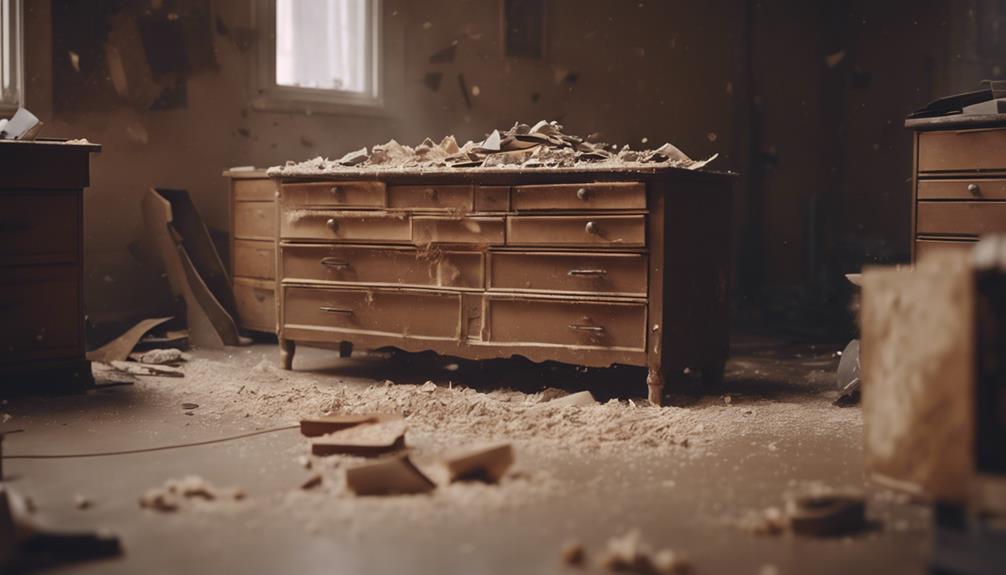
With our dresser stripped bare, we're ready to tackle the next essential step: sanding down the entire surface to create a smooth, even canvas for painting. Sanding is a pivotal step in transforming our dresser into a bookshelf, as it helps remove any imperfections and establishes a strong bond between the wood and paint.
Here are the key takeaways for sanding our dresser:
- We'll start with an orbital sander and 80 grit sandpaper to eliminate any damage or imperfections from the surface.
- Sanding the entire dresser, including sides, top, and drawers, is vital for a uniform finish.
- Pay special attention to corners, edges, and intricate details to achieve a smooth surface.
- Sanding helps the paint adhere better and establishes a clean canvas for our transformation.
- Take your time with sanding to achieve a professional-looking result.
Paint or Stain the Dresser
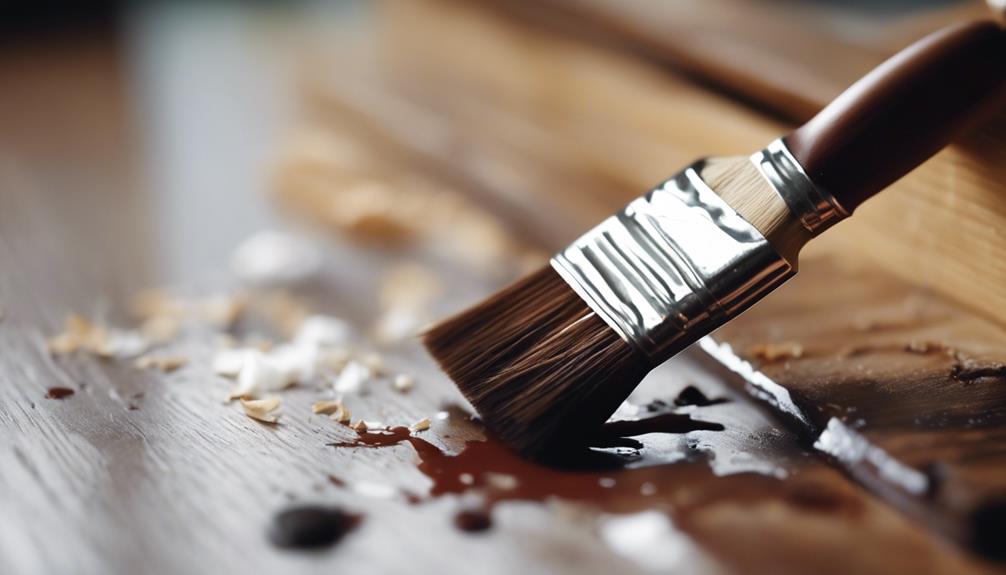
As we progress with transforming our dresser into a bookshelf, we'll need to make sure the surface is properly prepared for painting or staining. This involves prepping the surface, which includes sanding and potentially applying a primer to guarantee a smooth finish.
We'll also explore the various color options available, from bold hues to natural wood tones, to find the perfect fit for our new bookshelf.
Prep the Surface
We'll start by sanding the dresser's surface to remove any existing finish or imperfections, guaranteeing a smooth canvas for our new paint or stain. This step is vital in creating a beautiful, turned piece of stained wood that will soon become a functional bookshelf.
To guarantee a flawless finish, we'll follow these essential steps:
- Sand the dresser surface to remove any existing finish or imperfections.
- Choose a paint or stain that suits our desired look for the bookshelf.
- Apply a primer if needed to make sure the paint or stain adheres well.
- Use quality brushes or rollers for a smooth and even application.
- Allow sufficient drying time between coats for a professional finish.
Color Options
We've two fundamental options for transforming our dresser's look: painting it for a bold, eye-catching statement or staining it for a rich, natural wood finish that exudes classic elegance.
If we choose to paint, we can opt for a great, bold color to make a statement or go for a distressed look using chalk paint. We'll need to prime the surface first to guarantee a smooth finish. We can also experiment with different techniques like ombre, distressing, or stenciling to create a unique design.
On the other hand, staining the dresser can create a rich, natural wood finish that's perfect for a classic look. Dark Walnut is a great option for a sophisticated, timeless design.
Whichever option we choose, selecting a color that complements the room's decor and style is crucial for a cohesive look. By considering our options carefully, we can achieve a beautiful, one-of-a-kind bookshelf that reflects our personal style.
Measure and Cut Shelves
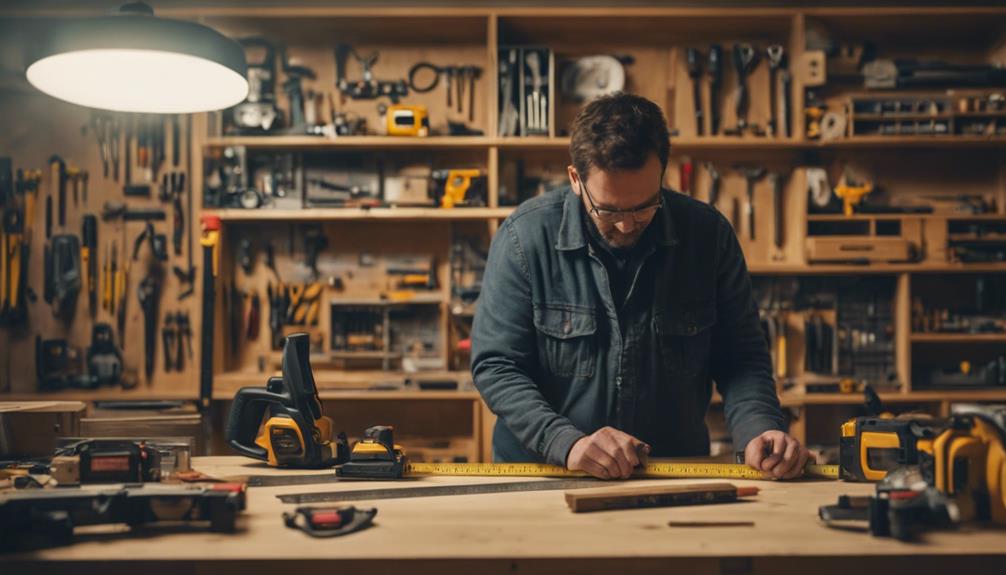
With our dresser's internal dimensions in hand, we measure carefully to determine the ideal shelf size, guaranteeing a snug fit that leaves enough clearance for easy book retrieval.
We take precise measurements to confirm the shelves fit perfectly, without being too tight or too loose.
Here are the key considerations for measuring and cutting our shelves:
- Measure the inside dimensions of the dresser to determine the size of the shelves needed.
- Use a saw to cut the shelves to fit the measured dimensions, ensuring they're snug but not too tight.
- Consider creating a curved bottom piece for aesthetic appeal and functionality, especially if the dresser has a curved design.
- Double-check the measurements before cutting the shelves to avoid any errors in fit and alignment within the dresser.
- Ensure the shelves are cut accurately to maximize storage space and create a cohesive look for the transformed bookshelf.
Attach Shelves With Brackets
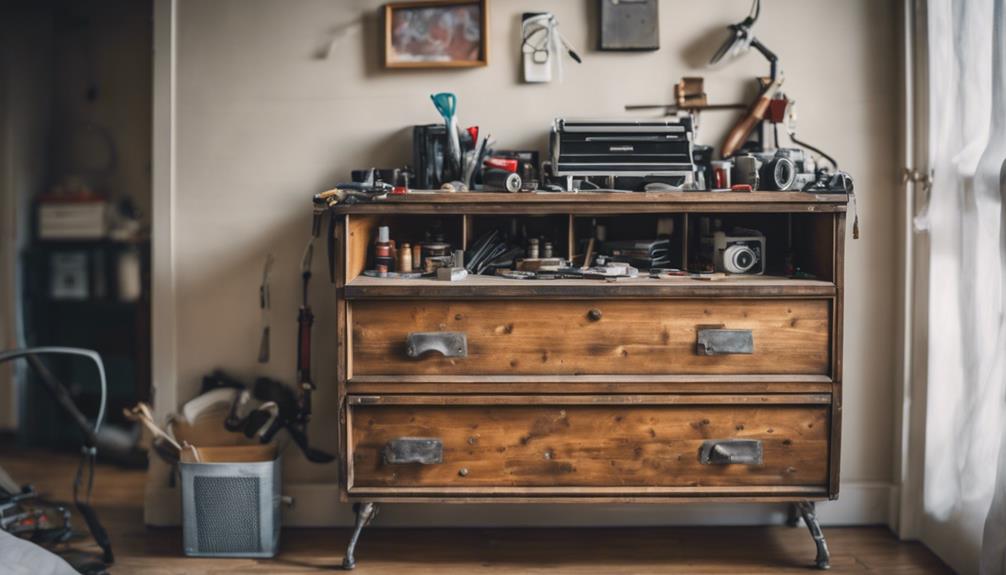
Securely attaching shelves to the dresser requires sturdy brackets that can support the weight of books or other items. We opted for solid wood brackets to guarantee a sturdy foundation for our bookshelf. To make the attachment process smooth, we positioned the brackets evenly along the sides of the dresser, ensuring balanced support.
Next, we double-checked that the brackets were properly leveled before attaching the shelves. This vital step prevented any wobbling or instability in the final product.
With the brackets in place, we carefully attached the shelves, making sure they were securely fastened. To test the stability of our handiwork, we gently applied pressure to each shelf, verifying that they could withstand the weight of our favorite novels and decorative items.
Add a Backing to the Shelves

Adding a backing to the shelves is an essential step in completing our bookshelf transformation, as it provides stability and support for the items we'll be placing on it. We can use a piece of scrap plywood or beadboard to create the backing, or even repurpose an old door or shutter to add some unique character to our bookshelf.
To attach the backing, we can use nails, screws, or a strong adhesive like Wood Glue, depending on the material and the look we're going for. If we want to add an extra decorative touch, we can paint or stain the backing to match the rest of our bookshelf.
Here are some key things to keep in mind when adding a backing to our shelves:
- A backing helps prevent items from falling off the back of the shelves
- It adds a finished look to the bookshelf
- We can use a variety of materials, including plywood, beadboard, or repurposed materials
- We can attach the backing using nails, screws, or adhesive
- Painting or staining the backing can add a decorative touch
Fill Gaps and Holes With Filler
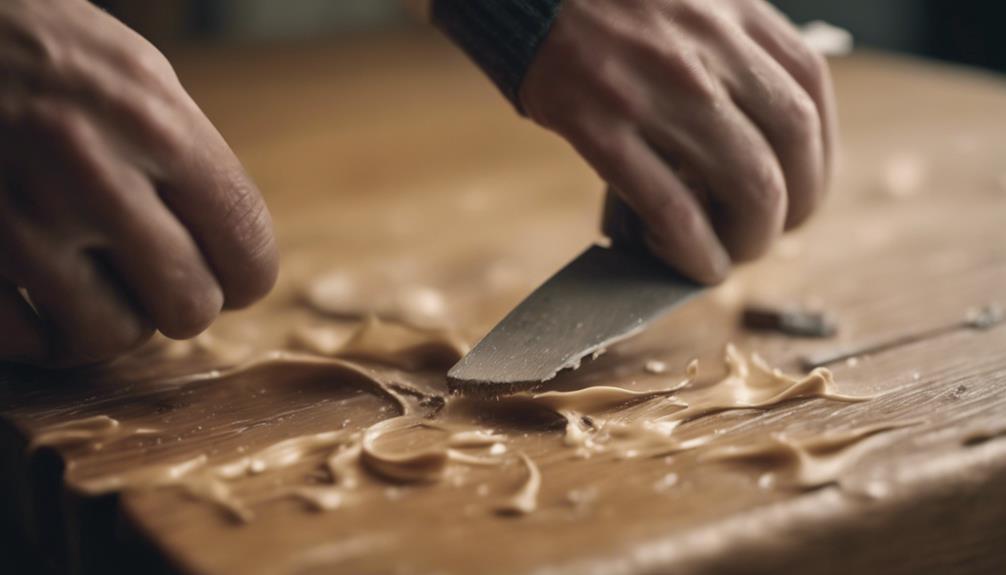
We need to fill in any gaps or holes in the dresser to create a smooth surface, ensuring our bookshelf looks polished and professional.
To do this, we'll use wood filler to fill in any imperfections. We'll apply the filler generously, making sure to fill the gaps completely. Then, we'll let it dry completely before moving on to the next step.
It's important to fill these gaps and holes, as they can detract from the overall appearance of our bookshelf. By filling them, we'll achieve a seamless finish that blends in with the rest of the dresser.
When applying the filler, we'll pay attention to details, ensuring it's evenly applied to achieve a professional look. Filling gaps and holes with filler is crucial for a polished final appearance of our repurposed dresser bookshelf.
Sand the Entire Piece Smooth

With our gaps and holes filled, we're ready to smooth out the entire dresser surface using an orbital sander with 80 grit sandpaper. This pivotal step guarantees a uniform base for our transformation, and it's vital for achieving a professional-looking finish.
Here's what we need to keep in mind as we sand the entire piece:
- Use an orbital sander with 80 grit sandpaper to smooth out the surface
- Sand away any rough patches, imperfections, and old finishes for a clean base
- Pay special attention to corners, edges, and intricate details to guarantee a uniform finish
- Wipe down the dresser with a tack cloth to remove any sanding dust before priming or painting
- Remember, the sanding process is essential for paint adhesion and achieving a finish that looks great
Add Decorative Trim and Molding
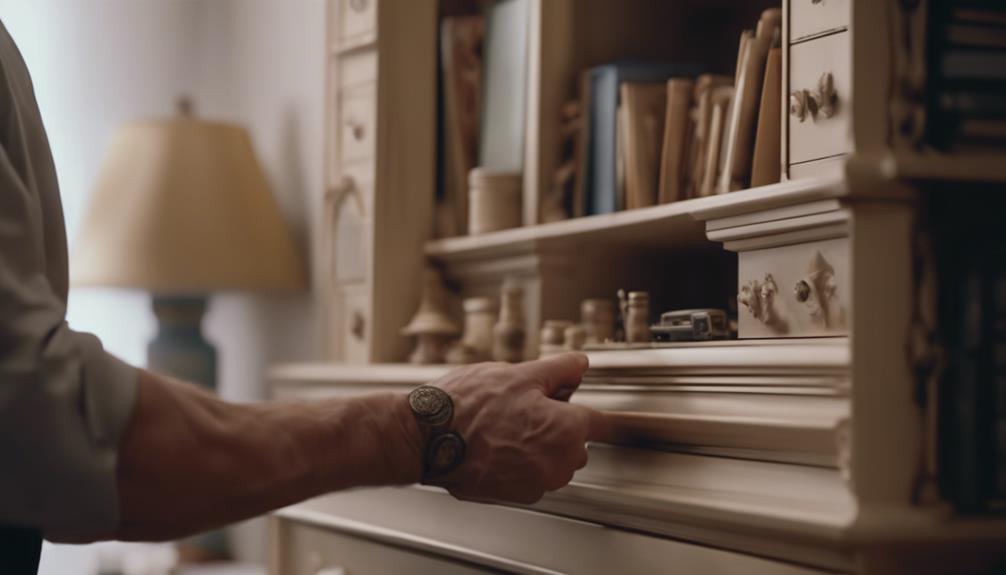
Now that our dresser's surface is smooth and even, let's take its transformation to the next level by incorporating decorative trim and molding to elevate its visual appeal.
We want our new bookshelf to look polished and refined, and adding trim and molding can achieve just that. By placing trim around the edges, we can create a seamless look that ties the entire piece together.
Molding, on the other hand, can add a touch of elegance and sophistication, drawing the eye to specific areas of the bookshelf. When choosing trim and molding, it's essential to select pieces that complement the style and design of our dresser bookshelf. We don't want the trim and molding to clash with the overall aesthetic, but rather enhance it.
For a truly personalized touch, we can customize the trim and molding to fit our unique style. By adding decorative trim and molding, we can take our bookshelf from bland to grand, making it a statement piece in any room.
The drawer fronts, in particular, can benefit from a decorative trim, giving the entire piece a cohesive and polished look.
Style Your New Bookshelf
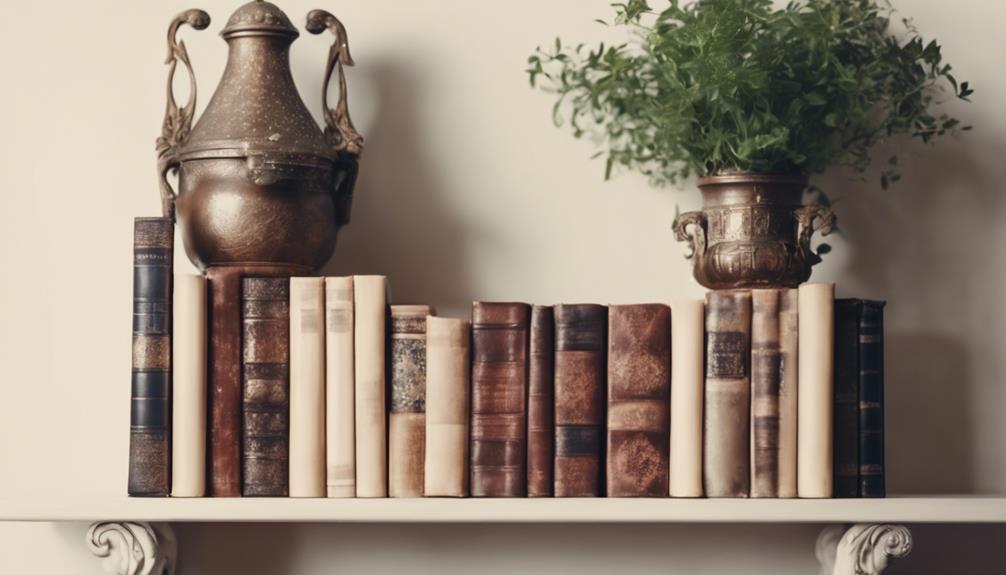
As we style our new bookshelf, we'll focus on three key aspects:
- bookshelf aesthetics
- decorative objects
- visual balance
We'll explore how to thoughtfully select decorative items that complement our bookshelf's design, and arrange them in a way that creates visual harmony.
Bookshelf Aesthetics Matter
We want our bookshelf to blend seamlessly into our existing space, so we choose a style that complements our room's unique character. To achieve this, we focus on bookshelf aesthetics, considering the overall look and feel we want to create. This is where the fun begins, as we get to add our personal touch to the design.
Here are some key considerations for styling our bookshelf:
- Choose a paint color or finish that matches our room's theme for a cohesive look
- Add decorative elements like trim, molding, or handles to enhance the bookshelf's appearance
- Consider using baskets or bins for additional storage that also add to the overall style
- Personalize our bookshelf with unique touches like wallpaper backing or painted designs for a custom look
- Think about the style and aesthetic of our bookshelf to complement our existing decor
Choose Decorative Objects
With our bookshelf's structure and aesthetics in place, we're ready to bring it to life by selecting decorative objects that reflect our personal style and complement our new bookcase's color scheme.
Now that our dresser turned bookshelf is transformed, it's time to add the finishing touches. We'll choose decorative objects that not only complement the color scheme but also add visual interest. A mix of books, vases, picture frames, and plants can create a dynamic display.
We'll opt for items of varying heights and textures to add depth and dimension. To create a visually appealing arrangement, we'll group objects in odd numbers and experiment with different layouts until we achieve a pleasing aesthetic.
Balance Visual Weight
To achieve a visually appealing bookshelf, we'll carefully balance the visual weight of our decorative objects. This involves combining tall and short items to create a harmonious arrangement. By considering the visual weight of each piece, which includes factors such as size, shape, and color, we can achieve a sense of balance and harmony on our bookshelf.
Here are some tips to keep in mind:
- Mix tall and short items to create visual interest
- Group similar items together for a cohesive look
- Add decorative elements like plants, artwork, or sculptures to enhance the overall style
- Experiment with different arrangements to find the perfect balance
- Regularly update the display to keep it fresh and visually appealing
Frequently Asked Questions
Can You Turn a Dresser Into a Bookshelf?
We can confidently say yes, you can turn a dresser into a bookshelf. This creative repurposing involves converting the existing structure to accommodate books and decor items.
The process may involve removing drawers, adding shelves, and making modifications to suit book storage. With some creativity and DIY skills, an old dresser can be transformed into a functional and stylish bookshelf that fits your space and design aesthetic.
How to Make Shelves Out of Dresser Drawers?
We're revamping the dresser's purpose, turning it into a bookshelf by repurposing the drawers as shelves. It's like giving new life to a worn-out canvas, where every brushstroke tells a story.
To create these shelves, we measure the inside dimensions, cut the drawer fronts to fit, and sand and paint them to match or contrast with the dresser. We then install the shelves using wood glue and screws, adding trim or brackets for extra support and visual appeal.
How to Change the Look of a Dresser?
We're looking to change the look of a dresser, and we're not limited to just painting it. We can update the hardware by adding new knobs or handles to give it a fresh feel.
Sanding and priming the surface guarantees a smooth, even finish. Then, we can choose a paint color that complements our decor.
How to Repurpose Dresser Drawers?
As we commence the journey of repurposing dresser drawers, we find ourselves standing at the crossroads of creativity and functionality.
We can choose to remove the drawers entirely, replacing them with shelves that stretch towards the sky like outstretched arms, or trim their facings to create a seamless, cohesive look.
We can add cleats for support and bottom trim for aesthetic appeal, transforming the dresser into a bookshelf that's both beautiful and functional.
Conclusion
As we've transformed this dresser into a bookshelf, we've witnessed a metamorphosis akin to a caterpillar's emergence as a butterfly.
The once-cluttered space now soars, its shelves a demonstration of the power of creativity and DIY determination.
Our labor of love has yielded a functional work of art, where stories unfold and knowledge awaits.
Like a phoenix from the ashes, our dresser-turned-bookshelf rises, a beacon of possibility, inviting all to partake in the beauty of transformation.
- About the Author
- Latest Posts
Introducing Ron, the home decor aficionado at ByRetreat, whose passion for creating beautiful and inviting spaces is at the heart of his work. With his deep knowledge of home decor and his innate sense of style, Ron brings a wealth of expertise and a keen eye for detail to the ByRetreat team.
Ron’s love for home decor goes beyond aesthetics; he understands that our surroundings play a significant role in our overall well-being and productivity. With this in mind, Ron is dedicated to transforming remote workspaces into havens of comfort, functionality, and beauty.
Decor
Learn How to Repurpose a Vintage Picnic Basket Into a Table in 5 Easy Steps
Just in time for outdoor entertaining, transform a vintage picnic basket into a one-of-a-kind table in 5 easy steps – learn how!
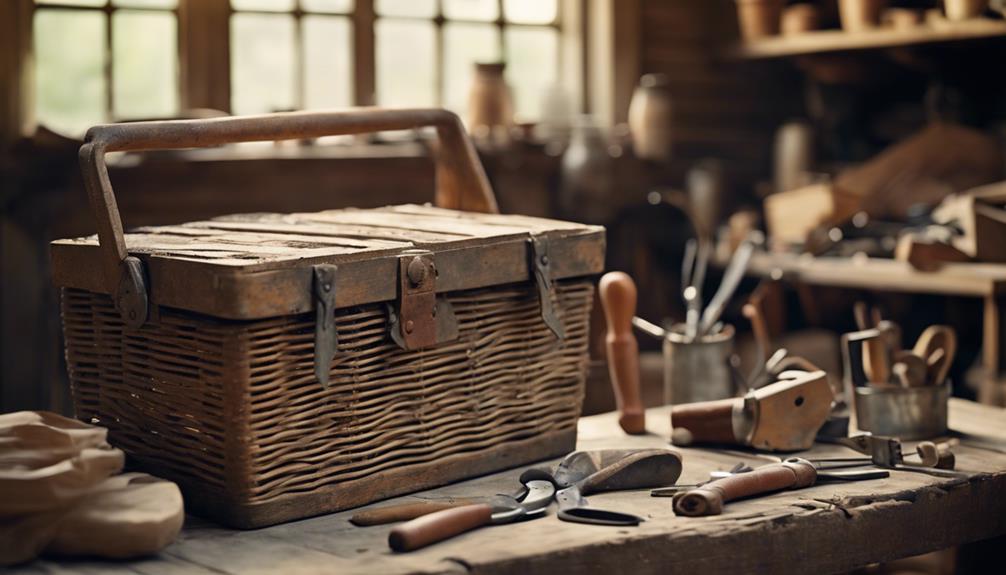
We're giving new life to an old vintage picnic basket by transforming it into a unique table in 5 easy steps. First, we prepare the basket by cleaning, inspecting, and removing unwanted parts. Next, we sand and paint the basket for a fresh look. Then, we add a wooden tabletop surface, attach table legs and a shelf, and finally, add decorative touches to complete the transformation. With these simple steps, we can turn an old picnic basket into a functional piece of decor. Now, let's get started and uncover the details of this creative upcycling project.
Key Takeaways
• Prepare the vintage picnic basket by cleaning, inspecting, and removing old hardware to ensure a sturdy foundation for the transformation.
• Sand and paint the basket to give it a fresh look, applying a protective sealant to preserve the paint.
• Attach a wooden tabletop surface to the basket, measuring and sanding the wood to fit securely and complement the basket's style.
• Securely attach table legs and a shelf to the basket, ensuring stability and even spacing for a functional table.
• Add decorative touches, such as a French transfer, chalk paint, or distressing, to create a unique and functional piece of decor.
Prepare the Vintage Picnic Basket
Let's get started by giving our vintage picnic basket a thorough cleaning to remove any dirt or debris that's accumulated over the years. We want to make sure it's spotless before we begin our repurposing project.
As we clean, we'll inspect the basket for any damage or loose parts that need to be fixed before we can transform it into a table. We'll remove any existing hardware or accessories that may hinder our transformation process.
Depending on the basket's condition, we might need to contemplate sanding or painting it to give it a fresh look before converting it into a table. We want to make certain our vintage picnic basket is sturdy and stable enough to support the weight of items placed on it once repurposed into a table.
Sand and Paint the Basket

We're ready to give our vintage picnic basket a fresh new look by sanding and painting it. This step is important in repurposing our basket into a unique table.
| Step | Task | Purpose |
|---|---|---|
| 1 | Sand the basket | Remove imperfections and old finish |
| 2 | Prime the surface | Guarantee paint adhesion |
| 3 | Apply paint | Transform the basket's appearance |
| 4 | Add protective sealant | Preserve paint and add shine |
We'll start by sanding the basket to eliminate any existing finish or imperfections. Next, we'll apply a primer to prepare the surface for painting and ensure better adhesion. Then, we'll apply a coat of paint in our desired color to transform the basket's appearance. After the paint dries, we'll consider adding a protective sealant to preserve the paint and give the basket a polished look. By following these steps, we'll be able to give our vintage picnic basket a fresh new look that's ready for its new life as a table.
Add a Wooden Tabletop Surface
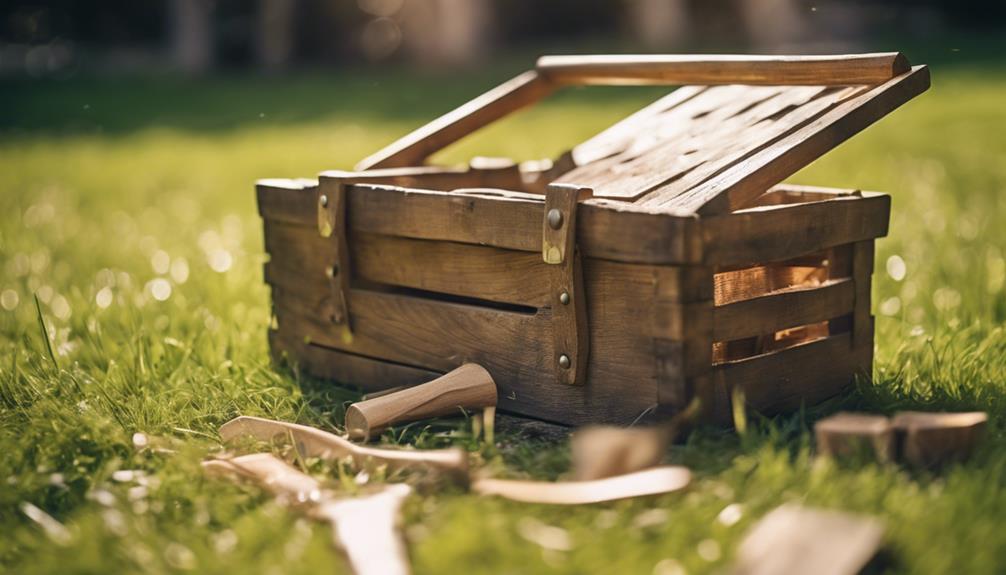
We measure the dimensions of the vintage picnic basket to determine the perfect size for our new wooden tabletop surface. With these measurements in hand, we head to the hardware store to purchase a pre-cut wooden board or have one custom-cut to fit the top of the basket securely.
Once we've our wooden board, we sand it to smooth out any rough edges and apply a stain or paint that complements the aesthetic of the vintage picnic basket. This guarantees a cohesive look and feel for our upcycled table. After the stain or paint dries, we attach the wooden tabletop securely to the basket using screws or adhesive, ensuring stability and durability.
With the wooden tabletop surface in place, our repurposed vintage picnic basket is transforming into a functional and stylish table. We're one step closer to having a unique piece of furniture that's perfect for indoor or outdoor use.
Attach the Table Legs and Shelf
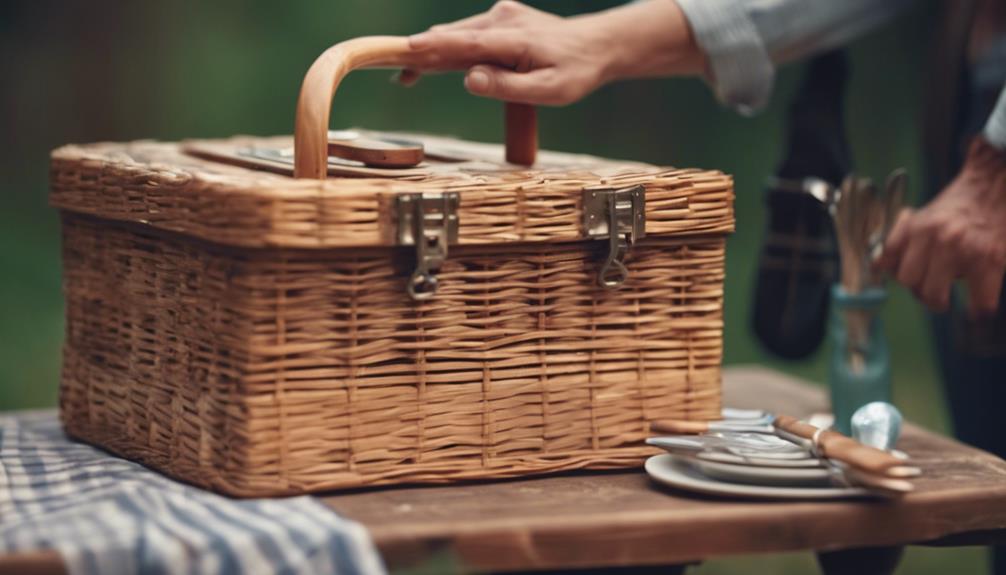
With our wooden tabletop surface securely in place, we can now focus on adding the table legs and shelf to complete the transformation of our vintage picnic basket into a functional table.
To attach the table legs, we'll use screws and a screwdriver to secure them to the bottom of the vintage picnic basket. It's crucial to make sure the legs are evenly spaced and level to provide stability for the table.
Here's a summary of the key steps to attach the table legs and shelf:
- Securely attach the table legs to the bottom of the vintage picnic basket using screws and a screwdriver.
- Add a shelf to the vintage picnic basket table by attaching it to the interior using brackets or screws.
- Double-check the stability of the table legs and shelf to make certain they're secure and level.
Once the legs and shelf are securely attached, our vintage picnic basket transforms into a functional and stylish table, perfect for displaying decorative items or storing essentials.
Add Decorative Touches and Finishing

Adding the perfect finishing touches to our vintage picnic basket table involves mixing functionality with aesthetic appeal. We've worked hard to get to this point, and now it's time to make our upcycled picnic basket shine!
To start, we'll add a French transfer to give our table a vintage touch. We'll secure our chalk paint with a clear matte spray to guarantee durability and protect our hard work. For a rustic look, we can distress the basket with sandpaper, revealing the beauty of the underlying wood.
If we want to make our table truly unique, we can add personal touches like numbers or other embellishments. The finishing touches are what take our picnic basket upcycle from functional to fabulous.
With a little creativity, our repurposed table can become a beautiful piece of functional decor, perfect for storage, display, or as a centerpiece in our home. By combining style and practicality, we'll create a one-of-a-kind piece that showcases our DIY skills and adds character to any room.
Frequently Asked Questions
What Can I Do With a Vintage Picnic Basket?
We're faced with a great question: what can we do with a vintage picnic basket? Well, we're thrilled to explore the possibilities!
With a little creativity, we can breathe new life into this nostalgic treasure. We can transform it into a unique side table, nightstand, or even a functional decorative piece. The options are endless, and we're enthusiastic to uncover the hidden potential in this vintage find.
How to Fill a Picnic Basket?
We're about to pack the mother of all picnic baskets!
When it comes to filling a picnic basket, we start with the essentials: blanket, plates, utensils, cups, napkins, and food. We use containers and bags to organize and protect items inside.
Don't forget a cutting board, knife, corkscrew, and other necessary tools. And, of course, we pack a small cooler for perishable items, sunscreen, bug repellent, and a trash bag for a comfortable picnic experience.
What Would You Put Into Your Picnic Basket?
When we're packing our picnic basket, we prioritize the essentials. We include sandwiches, snacks, fruits, and drinks, along with utensils, plates, cups, and napkins.
To guarantee a comfortable outdoor dining experience, we add a picnic blanket, sunscreen, and bug spray.
For entertainment, we bring games like cards, frisbees, or a ball.
And to capture memories, we don't forget our camera and portable speaker.
How to Pack a Picnic Hamper?
When packing a picnic hamper, we make sure to include essentials like a blanket, plates, utensils, and a corkscrew.
We select easy-to-transport food items like sandwiches, salads, and fruits, and store them in containers or resealable bags to keep them fresh.
We also add eco-friendly disposable items like bamboo plates and biodegradable napkins to reduce waste.
Conclusion
As we step back to admire our handiwork, the vintage picnic basket's rustic charm shines through in its new life as a one-of-a-kind table.
The wooden tabletop's warm glow complements the basket's distressed finish, while the sturdy legs provide stability and a touch of modernity.
The result is a functional work of art that whispers stories of summers past, inviting us to gather 'round and create new memories.
- About the Author
- Latest Posts
Introducing Ron, the home decor aficionado at ByRetreat, whose passion for creating beautiful and inviting spaces is at the heart of his work. With his deep knowledge of home decor and his innate sense of style, Ron brings a wealth of expertise and a keen eye for detail to the ByRetreat team.
Ron’s love for home decor goes beyond aesthetics; he understands that our surroundings play a significant role in our overall well-being and productivity. With this in mind, Ron is dedicated to transforming remote workspaces into havens of comfort, functionality, and beauty.
Decor
Create a Faux Wood Grain Finish
Nailing the art of faux wood grain finishing requires precision, patience, and the right techniques to achieve a remarkably realistic look.
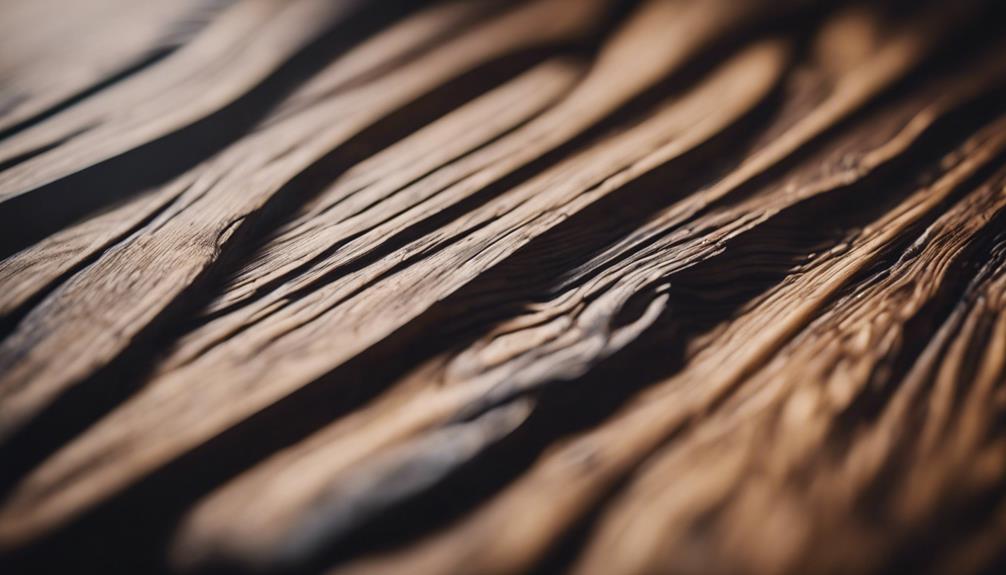
We're about to master the art of faux wood grain finishing, requiring attention to detail and the right tools. Start with a smooth surface, sanding with 320-grit sandpaper, and wiping off dust. Choose high-quality brushes, glazes, and specialized tools, like wood graining brushes, for realistic effects. Apply a yellow or orange base coat, sanding and priming for adhesion. Then, use a wood graining brush to create natural patterns, experimenting with comb-like tools for textures. As we continue, we'll uncover the secrets to blending colors, adding textures, and sealing the finish, revealing a remarkably realistic wood grain effect that's sure to impress.
Key Takeaways
• Start with a smooth surface by lightly sanding with 320-grit sandpaper and wiping off dust for a flawless finish.
• Choose high-quality brushes, glazes, and specialized tools carefully to achieve realistic wood grain patterns.
• Apply a yellow or orange interior paint as the base coat, using long brush strokes for a wood-like effect.
• Use a wood graining brush to create natural patterns, maintaining consistent brush strokes for realism and authenticity.
• Blend multiple coats of gel stain to achieve a realistic wood grain effect, mimicking natural grain patterns and textures.
Preparing the Surface
As we begin our faux wood grain finish project, we need to start with a smooth surface, so we'll lightly sand the area to create a solid foundation for our paint and glazes. This is important because proper surface preparation is essential for the success and durability of our faux wood grain finish.
We'll use a 320-grit sandpaper to achieve a dull finish that helps the paint adhere better. After sanding, we'll wipe off any dust with a damp, lint-free cloth to guarantee a clean surface. This step is essential, as a well-prepared surface will help our paint and glazes mimic the look of natural wood effectively.
We can't stress enough how important it's to get this step right, as it sets the stage for the rest of our project. By taking the time to properly prepare our surface, we'll be rewarded with a beautiful, long-lasting faux wood grain finish that looks like the real deal.
Choosing the Right Tools
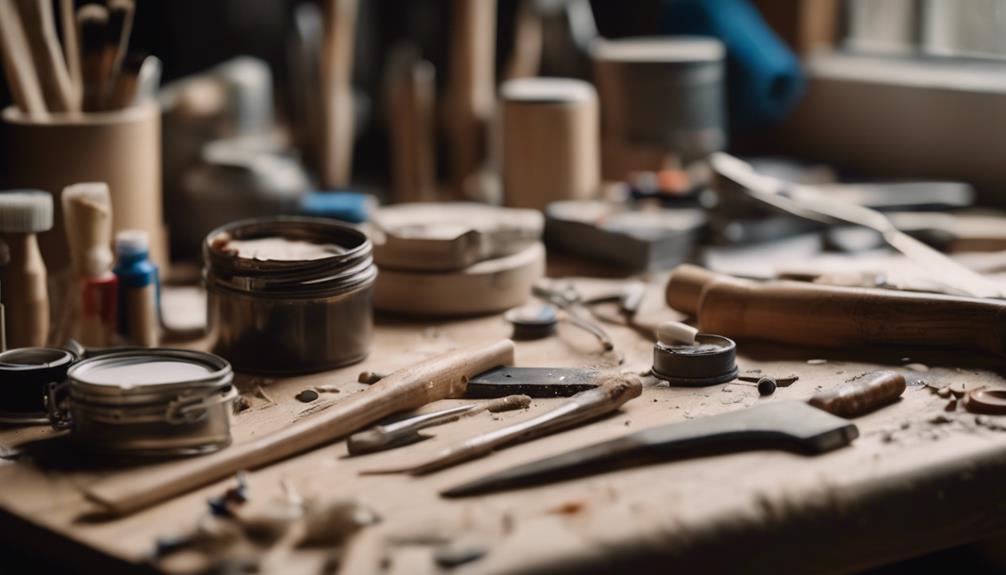
As we progress with our faux wood grain finish project, we need to select the right tools for the job.
We'll explore the key criteria for choosing the best brushes, why paintbrush quality matters, and how surface preparation is crucial for achieving a realistic wood grain effect.
Tool Selection Criteria
Mastering the art of creating a convincing faux wood grain finish requires carefully selecting our tools. We understand that the correct brushes, glazes, and specialized tools are crucial in achieving realistic results.
When aiming for a painted finish that captures the authenticity of wood, we carefully choose various sizes of brushes to produce different wood grain patterns and textures. A specially designed wood graining brush with a curved shape and rings is instrumental in creating lifelike effects.
We also explore the use of glazes, whether they're pre-made or self-mixed, to attain the desired finish. Moreover, we contemplate using comb-like tools to add extra effects and detailing to the faux wood grain finish.
Practicing on a sample surface before tackling the final piece is vital to perfecting the technique and final outcome. By selecting the right tools and honing our technique through practice, we can achieve a faux wood grain finish that closely resembles the real thing. Armed with the appropriate tools and a bit of practice, we can produce professional-looking results that are sure to impress.
Paintbrush Quality Matters
We settle on high-quality paintbrushes with fine bristles, specifically designed for faux wood grain painting, to guarantee we capture the intricate textures and patterns that make our finish look authentic. When it comes to creating realistic wood grain textures, paintbrush quality matters. We've learned that investing in high-quality brushes makes a significant difference in the final appearance of our faux wood finish.
Here are some key takeaways to keep in mind when selecting paintbrushes for faux wood grain painting:
- Fine bristles: Essential for capturing intricate textures and patterns.
- Specific design: Look for brushes designed specifically for faux wood grain painting.
- Stiff bristle brushes: Ideal for applying gel stains and blending colors seamlessly.
- High-quality brushes: Ensure smooth application and professional-looking results.
Surface Prep Essentials
Before applying our faux wood grain finish, we meticulously prepare the surface with the right tools to guarantee a flawless base for our masterpiece.
We begin by using 320-grit sandpaper for surface prep, achieving a smooth and dull finish on the furniture surface.
Next, we prime the surface evenly with Zinsser Bulls Eye 123 primer, establishing a strong bond between the primer and our faux wood grain finish.
We differentiate between the interior paint in yellow/orange hue for the base color and gel stain for creating the wood grain effect. To maintain precision, we employ separate paintbrushes for primer and gel stain application.
After sanding, we make sure the surface is smooth and ready for the next step, ensuring a realistic and professional-looking faux wood grain finish.
With the right tools and surface prep essentials, we set ourselves up for success in achieving a convincing wood grain finish. By following these steps, we can be confident that our masterpiece will turn out exactly as envisioned.
Applying the Base Coat
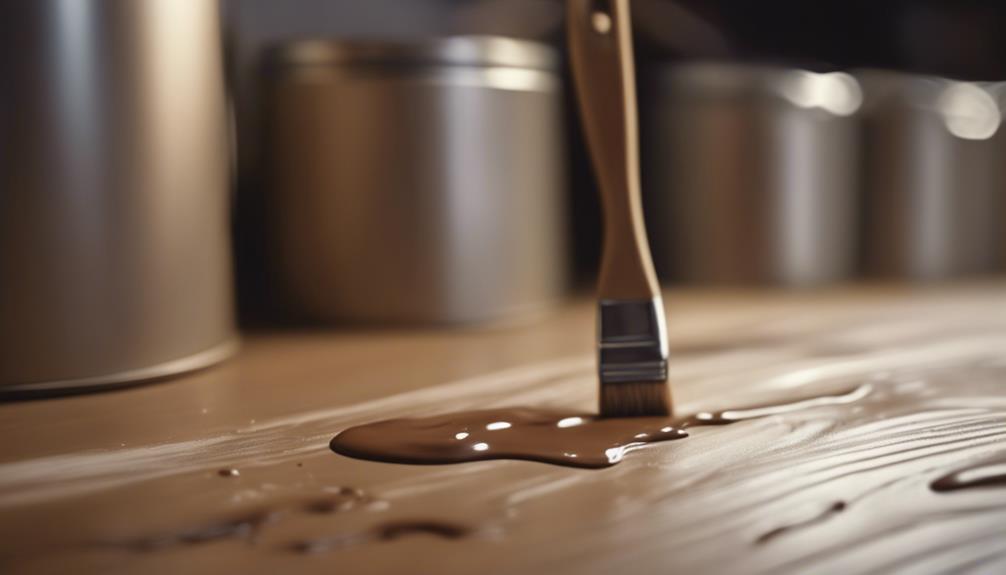
As we move forward with applying the base coat, we need to ponder our base coat options carefully, as this initial layer sets the tone for the entire faux wood grain finish.
We'll explore the importance of choosing the right base coat color to achieve a realistic wood appearance, as well as the essential preparation steps to guarantee a smooth application process.
Base Coat Options
We'll start by selecting a suitable base coat color, typically a yellow or orange interior paint, to provide a warm foundation for our faux wood grain finish. This base coat serves as the foundation for our faux wood grain, enhancing the realism of the final finish.
To achieve a realistic wood-like effect, we'll apply the base coat with long brush strokes in one consistent direction, mimicking the natural grain pattern of real wood.
Here are some key considerations when choosing a base coat:
- Color: Yellow or orange interior paint provides a warm foundation for the faux wood grain finish.
- Application: Apply the base coat with long brush strokes in one consistent direction to create a wood-like effect.
- Evenness: Make sure the base coat is evenly applied and fully dried before proceeding with the next steps in the faux wood grain painting process.
- Influence: The base coat not only provides the background color but also influences the overall appearance and depth of the faux wood finish.
Preparation Essentials
Now that we've selected our base coat color, we need to prepare the surface to guarantee a smooth, even application. This vital step ensures our faux wood grain finish turns out realistic and stunning.
To begin, we'll sand the surface to create a smooth base for our faux finish. This removes any imperfections and provides a clean slate for our paint.
Next, we'll apply a primer to make sure proper adhesion of the base coat. This helps prevent peeling or flaking down the line.
With our surface prepared, we can finally apply our chosen base coat color. For a realistic wood grain effect, we'll use long brushstrokes in one direction. Our yellow or orange hue will mimic the undertones of wood, providing a natural starting point for our faux finish.
After applying the base coat, we'll let it dry completely before moving on to the next steps in our wood grain painting process.
Creating the Wood Grain Pattern
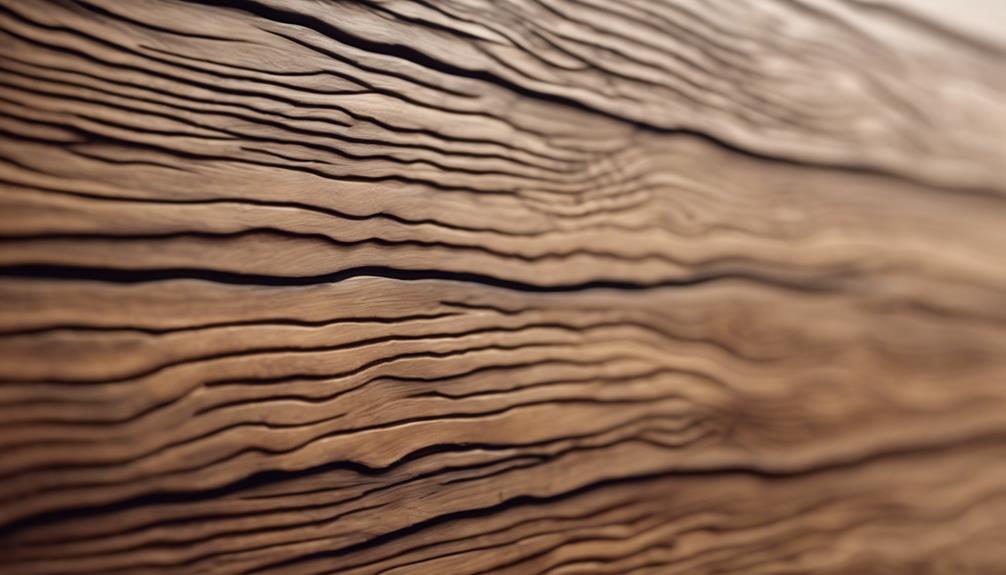
With a wood graining brush in hand, we begin creating the wood grain pattern by applying consistent, smooth strokes in a single direction. This helps to mimic the natural flow of wood fibers, creating a realistic wood grain effect.
Here are some essential tips to keep in mind when creating the wood grain pattern:
- Use the curved shape of the wood graining brush to accurately mimic natural wood grain patterns.
- Maintain consistent brush strokes in the same direction to create a realistic wood grain effect.
- Experiment with comb-like tools to add additional textures and effects to the faux wood grain finish.
- Blend and soften the finish as needed to achieve a seamless and natural-looking wood grain pattern.
Adding Color and Texture
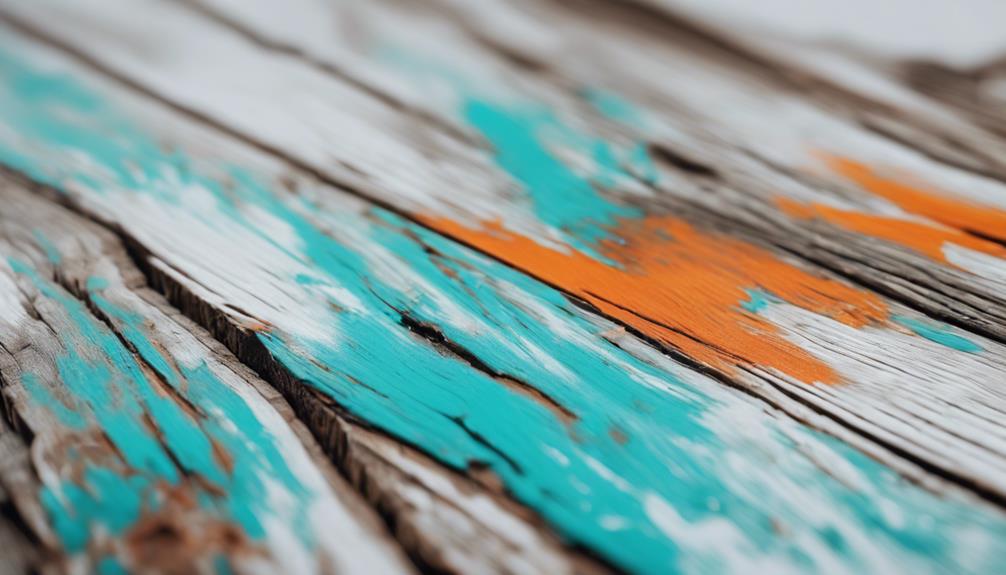
We secure depth and realism to our faux wood grain finish by combining a base color with gel stain, carefully blending multiple coats to achieve a rich, natural-looking effect.
By applying the gel stain in smooth, long strokes, we can mimic the natural grain patterns of wood.
The key to a realistic wood grain effect lies in the blending of multiple coats of gel stain. We must blend carefully, as the direction and blending of paint strokes determine the unique faux wood grain pattern on the surface.
To secure a smooth base for our faux wood grain finish, we may need to apply thick consistency primer quickly and evenly. As we work, we're careful to maintain a consistent texture and color tone to create an authentic wood look.
Sealing the Finish
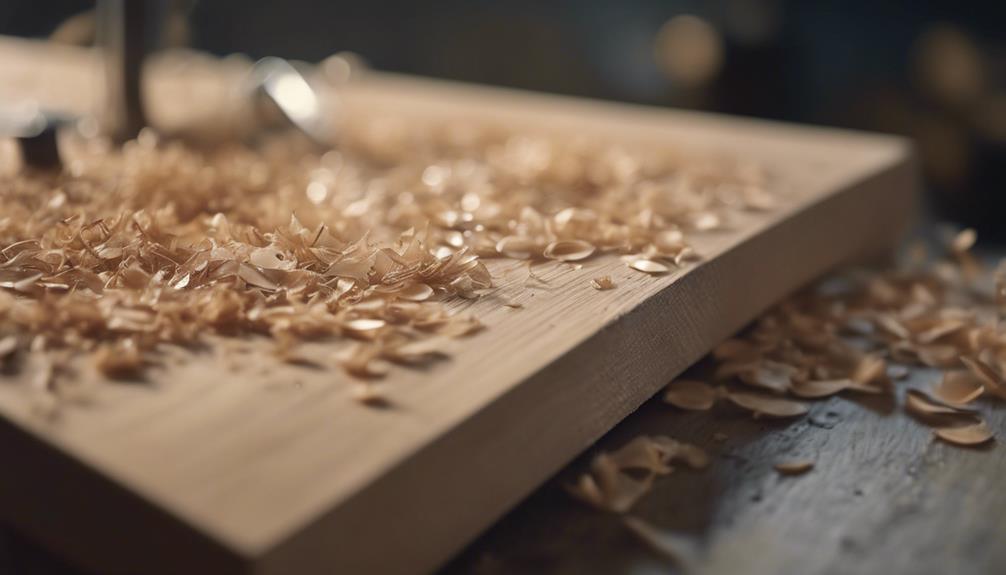
One essential step remains: sealing our beautifully crafted faux wood grain finish to safeguard it against wear and tear. By doing so, we guarantee our hard work doesn't go to waste. Sealing protects the painted surface, enhancing its durability and making it easier to maintain.
Here are some key points to take into account when sealing our faux wood grain finish:
- Choose the right sealer: Select a clear topcoat or wax based on the desired sheen level, such as satin, semi-gloss, or high-gloss.
- Durability is key: A sealer provides a smooth, protective barrier, making our faux wood grain surface more resistant to wear and tear.
- Enhance the appearance: Sealing enhances the wood-like appearance, making it more realistic and visually appealing.
- Easy maintenance: Proper sealing ensures our faux wood grain surface remains easy to clean and maintain.
Frequently Asked Questions
How to Wood Grain Effect?
To achieve a wood grain effect, we use specialized tools and techniques. We employ a wood graining brush with a curved shape and rings to mimic natural patterns.
Applying glaze, either premade or self-mixed, helps create the faux wood grain effect. Brush strokes should follow the same direction for consistency.
We also experiment with comb-like tools for unique variations.
How to Make MDF Look Like Wood Grain?
'Painting a masterpiece of deception' is our goal when making MDF look like wood grain.
To start, we sand the surface with 320-grit sandpaper, creating a smooth canvas.
Then, we prime it with Zinsser Bulls Eye 123, ensuring a strong foundation.
Next, we apply a yellow/orange base coat, followed by gel stain in smooth strokes, blending multiple coats to achieve a realistic wood grain finish that's sure to fool the eye.
Is There Such a Thing as Paint That Looks Like Wood?
We're glad you asked!
Yes, there are paints specifically designed to mimic the look of wood grain. These paints often contain special additives or textures to create a realistic wood appearance. They come in a variety of colors and finishes to imitate different wood types. With proper application techniques, the resemblance to natural wood grain can be quite convincing.
How Do You Simulate Wood Grain on Plastic?
We've all seen those cheap, plastic planters that scream 'fake wood.' But, imagine transforming them into authentic-looking wooden masterpieces.
To simulate wood grain on plastic, we use a wood grain tool or fine paintbrush to create realistic patterns. For instance, take a plastic picture frame – we'd apply a wood-like base coat, then mimic natural wood grain directions and characteristics using varying shades and techniques.
Conclusion
As we master the art of creating a faux wood grain finish, we've discovered a world of possibilities.
By preparing the surface, choosing the right tools, and applying the base coat, we've set the stage for a realistic wood grain pattern.
With added color and texture, our creation comes alive.
Finally, securing the finish guarantees a durable, long-lasting result.
With patience and practice, we can replicate the beauty of natural wood, transforming ordinary surfaces into extraordinary works of art.
- About the Author
- Latest Posts
Introducing Ron, the home decor aficionado at ByRetreat, whose passion for creating beautiful and inviting spaces is at the heart of his work. With his deep knowledge of home decor and his innate sense of style, Ron brings a wealth of expertise and a keen eye for detail to the ByRetreat team.
Ron’s love for home decor goes beyond aesthetics; he understands that our surroundings play a significant role in our overall well-being and productivity. With this in mind, Ron is dedicated to transforming remote workspaces into havens of comfort, functionality, and beauty.
-

 Vetted2 days ago
Vetted2 days ago15 Best Printers of 2024: Top Picks and Expert Reviews
-

 Vetted4 days ago
Vetted4 days ago15 Best Tile Sealers for Long-Lasting Protection and Shine
-

 Vetted1 week ago
Vetted1 week ago15 Best Smelling Floor Cleaners That Will Leave Your Home Fresh and Inviting
-

 Vetted7 days ago
Vetted7 days ago14 Best Power Scrubbers for Showers That Will Transform Your Cleaning Routine
-

 Mardi Gras Decoration1 day ago
Mardi Gras Decoration1 day agoWhat Do the Symbols of Mardi Gras Mean?
-

 Appliances5 days ago
Appliances5 days ago5 Best Energy-Efficient Stainless Steel Fridges 2023
-
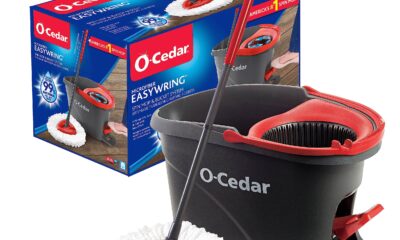
 Vetted4 weeks ago
Vetted4 weeks agoBest Mop for Sparkling Clean Floors in 2024
-
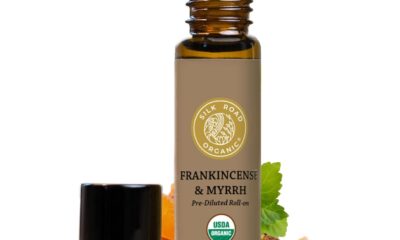
 Vetted4 days ago
Vetted4 days agoBest Essential Oil Brand: Top Picks for 2024




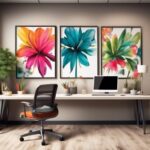
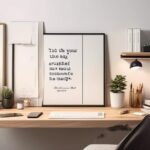

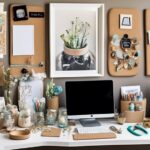















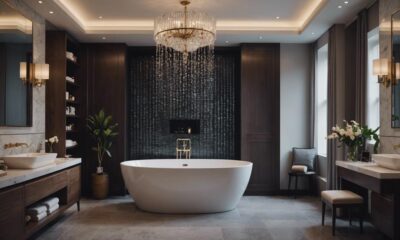
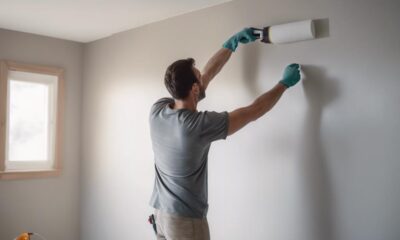


![Best Murphy Bed Options for Small Spaces [2024] 177 81VUhrTjgqL](https://byretreat.com/wp-content/uploads/2023/11/81VUhrTjgqL-80x80.jpg)

